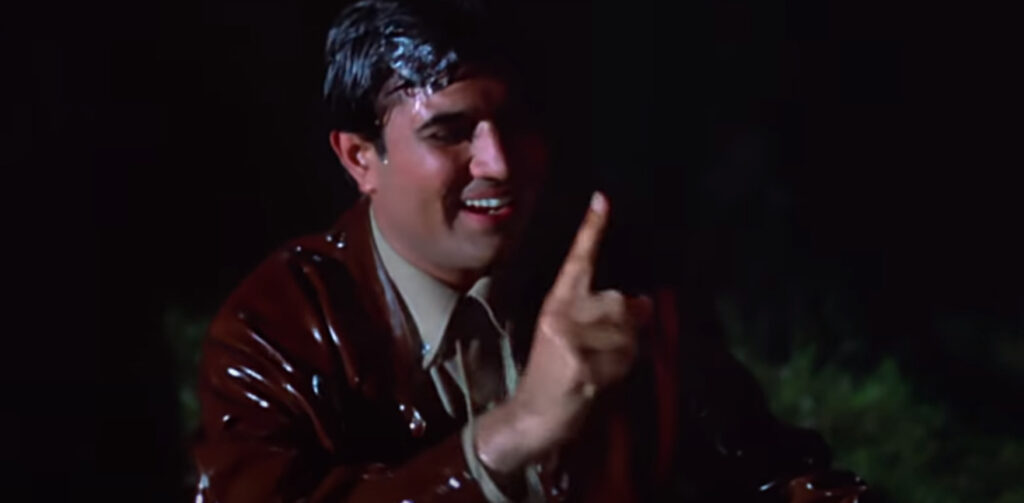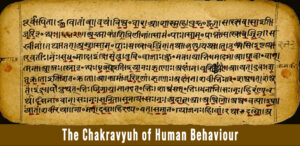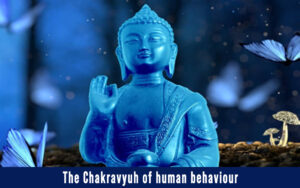Storytelling in yesteryear Bollywood was simpler. For one, cigarettes and alcohol were great accessories that helped to define and create characters. A dark character would smoke with the smoke curling into his eyes, like Dev Anand in Raaz. For an intellectual look, the lead actor could blow the smoke skywards looking into oblivion, like Ashok Kumar in Gumrah. And then there were concentric smoke circles for the thought within a thought moment.
For a vamp look, a cigarette holder was a mandatory prop like Nadira had in Aan.
Drinking on screen though was another cup of tea. Heroes didn’t drink unless forced to – like Dilip Kumar (main peeta nahi hoon, pilayee gayee hai) or when Rajesh Khanna was lured into having bhang with ‘Nadiya se Dariya’. Then again heart break was a legit reason, once again for Dilip Kumar in Devdas. Or when it was Amitabh pretending with ‘O Julie O Sheela’.
In all this the one ‘fearless’ drunk who could do a very convincing drunk was RajKumar (in Kajal)
He could walk one step left, half step forward, and then lurch two steps back to play the drunk. Boris Spasky would have found it difficult to beat that brilliant manoeuvre on the chess board. Later however Rajesh Khanna did the whole routine with the élan of Bobby Fischer. He would move his torso and neck and eyes, while his arms would jerk away in a way that had girls swooning to ‘Yeh jo Mohabbat hai’.
And that’s the way we guys were brought up. Tank up to sing love songs or songs of sorrow. Because back then most guys didn’t have the courage to express feelings. A drunken evening was a good license to say it all. The next morning while one might get scolded but no one was beyond reproach. After all boys will be boys.
Back to the screen. For the leading lady to drink on screen was another matter. Film-trade pandits would tell you it was professional hara-kiri for a heroine to drink on screen. So her reason to drink had to be consistent with her ‘Sati Savitri’ persona, like Meena Kumari in Sahib, Biwi aur Ghulam – the spurned wife.
If Rajkumar’s body could do a convincing sway in ‘Jitni likhi thi muqaddar mein’, Meena Kumari’s pleading eyes in ‘Na jao saiyan chuddha ke bayian’, could beat the sway hands down.
I’m sure there are many more but my favourite is Sadhna in ‘Inteqaam’ swaying to a ‘suroor’ of revenge as she sang, “kaise rahoon chup”.
But that was then. When a drink was a means to express. It would usually lead to a song or shayari or a drunken stupor.
Not today. For one, drunken behaviour is not as socially acceptable. Relationships get broken, reputations are shattered, divorce lawyers are waiting to sink their teeth into AAA members.
Also, drunk/jilted men and women don’t break into shayari anymore. Angry Aalia will not sing a ghazal but break a beer bottle on the other girls’ head when she does ‘gullu gullu’ with her boyfriend.
Increasingly our society is getting more violent and poetry & shayari to express matters of an inebriated heart are truly a thing of the past.
In his book ‘The world is yours to change’, the Japanese philosopher Daisaku Ikeda suggests that violence is the cry of a heart that hasn’t been heard. It’s important therefore to listen to the heart in pain. Lest it wreak havoc.
Here’s a song that asks, ‘can you hear me’, in a way that you can never ignore.


